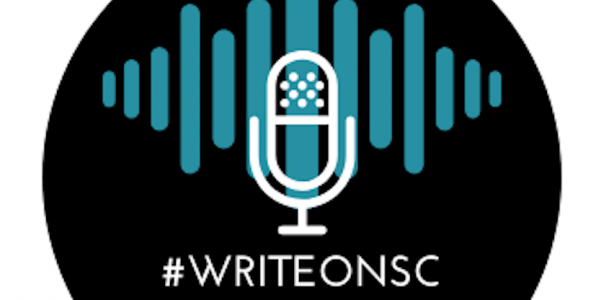On July 20th, Kasie and Rex went a few rounds over the right way to end a short story. Here are the show notes:
Theme for the day
Short Story — Endings
Agenda
- Short Story Basics
- Structure of a short story
- A “Satisfying” End

Segment 1
So last week we kicked off Short Story month by talking about how the short story is an American contribution to the literary canon. We backed up our American audacity with these links: The Origins and History of the American Short Story which argues it’s like jazz music; Encyclopedia Brittannica which says other words for it — sketch, tale — are indicative of the form’s evolution; and Wikipedia (of course) which says Hawthorne’s Twice Told Tales legitimized the form by collecting multiple stories and publishing them together.
Then we went through the (very obvious) structure of the short story:
Elements of a short story (arguably of ANY story, short or otherwise):
- Plot
- Character
- Setting
- Conflict
- Theme
- Narrative
- Exposition
- Complication
- Crisis
- climax, and
- resolution of the crisis
We talked a lot about including exposition, keeping the story “tight” which means cutting any extraneous details, and focusing on one or two characters.
Today’s focus is on what one of last week’s resources called “a satisfying ending.”
How do you know the story is over?
What makes an ending satisfying?
What are some “types” of endings?
Twist — the twist ending is about surprising your reader. BUT it must be hinted at, even if those hints are so subtle the reader misses them the first time through. A mast of this was O. Henry and we’ve talked about his work repeatedly.
Segment 3
How to write a good short story ending (from Writer’s Relief):
- Indicate character change through action
- Show character stasis through inaction
- Kill someone
- Welcome baby — literally
- Twist the ending (and here’s a link to how)
- Leave unanswered questions unanswered (is this satisfying?)
- Happily ever after (HEA)
Writer’s Digest offers this advice on how to write a good ending:
- The barely there ending — an ambiguous, musing finale that indicates the story will go on from here we just won’t get to read it
- Use if: your readers are sophisticated, your story is built around quiet events (self discovery), your story is brief
- The real-life ending — somewhat mundane, indicates life will go on and again, we just won’t see it
- Use if: the story has been fantastic and unbelievable things have happened, the story had some internal struggle and resolution, the character is unable to change
- The twist ending — see O. Henry discussion from earlier, the “twist” is something that surprises the reader, forces them out of comfort, and is debatable in terms of realism and fit.
- Use if: the story is meant for readers who like puzzles, the story has delivered clues that the surprise may occur, the surprise is genuinely a surprise — try not to “hack” this.
- The classic denouement — what Twain called “the marryin and the buryin” or the right-fit climax to the story, exactly what should happen to each and every character.
- Use if: it is proportionate to the story, the story has a very real and recognizable climax, the end can tell us everything we want to know
Check out this list of Satisfying Story Endings dos and donts.
Show the result of the story’s conflict
Come from the main characters’ actions
Use elements of the story’s beginning
Or this list of six “clever” ways though how clever they are is debatable:
- Resolved ending
- Unresolved ending
- Implied ending
- Twist in the tale
- Tie-back (or let the ending “kiss” the beginning)
- Crystal ball
Ready to support Write On SC? Go to Patreon.com/WriteOnSC to become a patron!

2 Comments Add yours